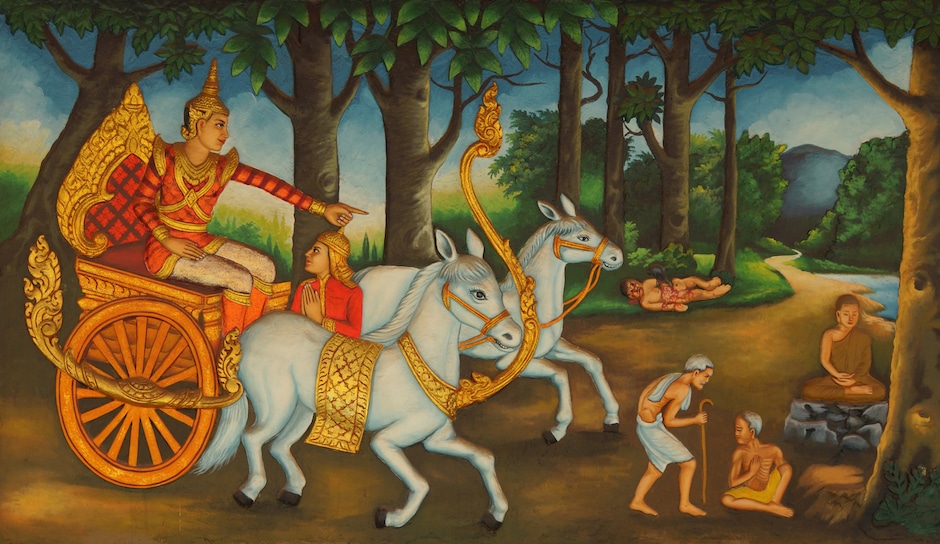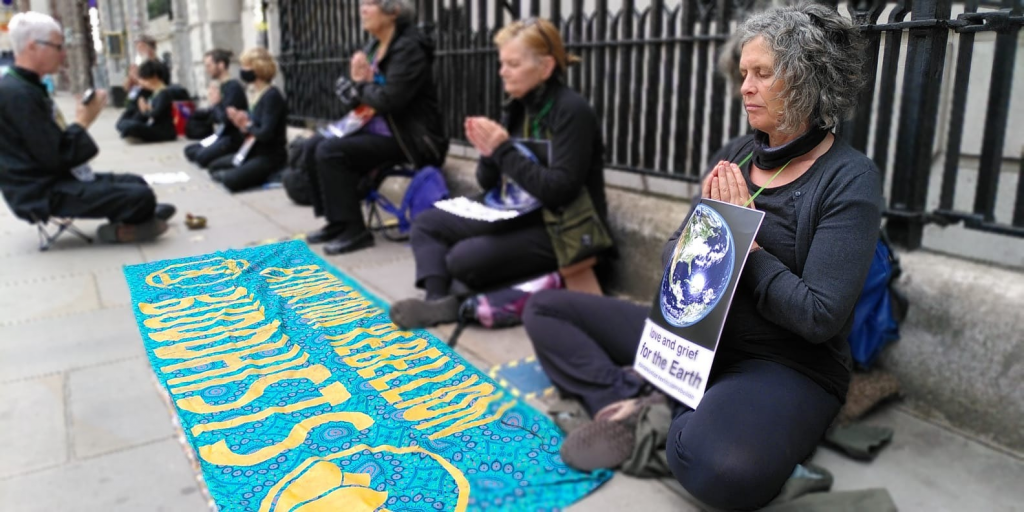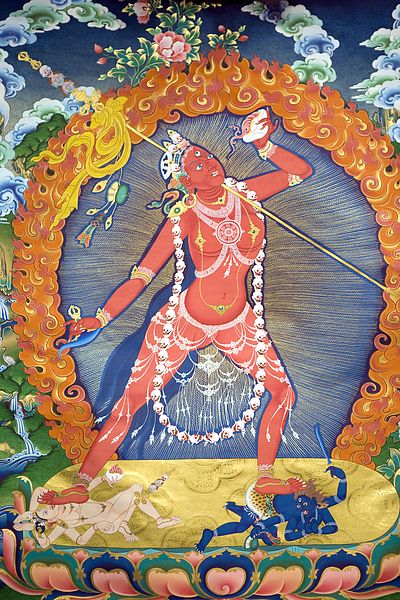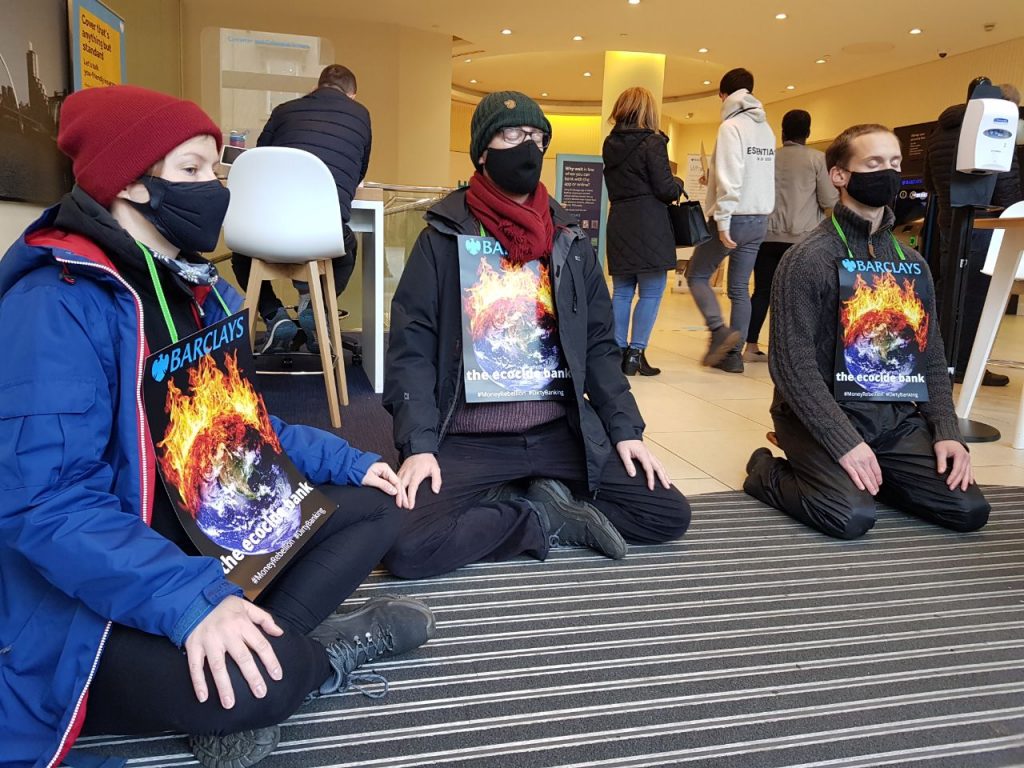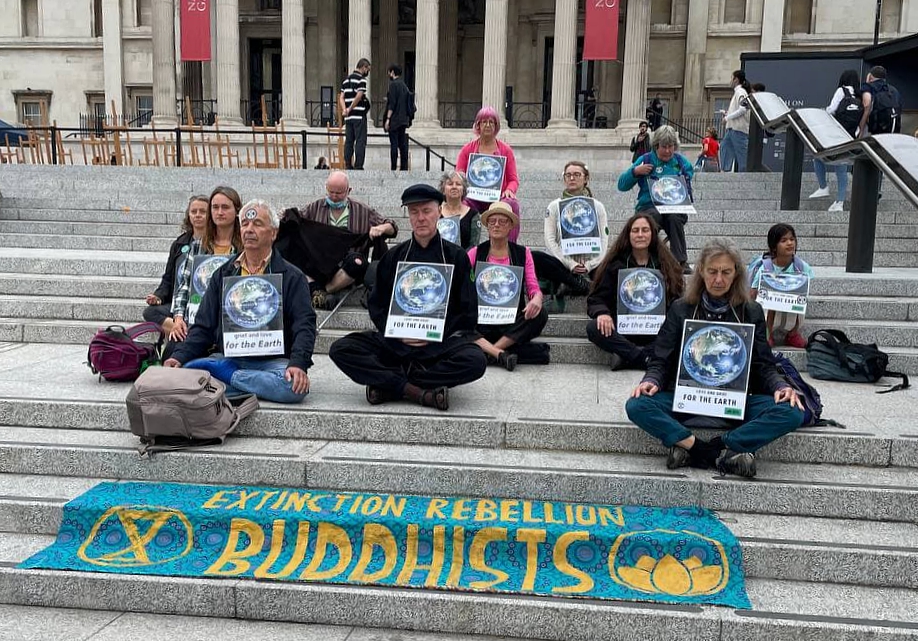Momentum
A reflection by by Mat Osmond
Three years ago I took part in civil resistance for the first time when I joined Extinction Rebellion for their October 2019 uprising. On my fourth day with XR I was finally arrested, minutes after my friend Satya Robin had been carried past me by six police officers, sobbing deeply. I’ve written before of that first experience of arrest but what’s kept coming back to me from those four days isn’t that, but rather the long walk home along the Thames on each of the previous three nights.
There were about 5000 of us taking action in Westminster that October, but the moment you stepped outside the protests there was no sign at all that anything was happening. Everywhere else, London just hummed along as normal. So too on the UK news channels that we all kept looking to for evidence of our actions’ ‘impact’. Barely a mention. The dissonance this generated – as if stepping back and forth each day between two completely different realities – came to a head on the third of those slow night-walks home, as I found myself looking across the Thames at the ongoing redevelopment of Battersea Power Station. The familiar old chimney-stacked giant was surrounded by the dark outlines of cranes, all lit up with red safety lights. It presented an eerily beautiful spectacle: the massive station hulked against the dark skyline beyond the river’s swirling current, surrounded by little votive lights. As I stood looking at it the unease finally gathered itself into a question that, once spoken, has never really gone away: Who exactly are you kidding?
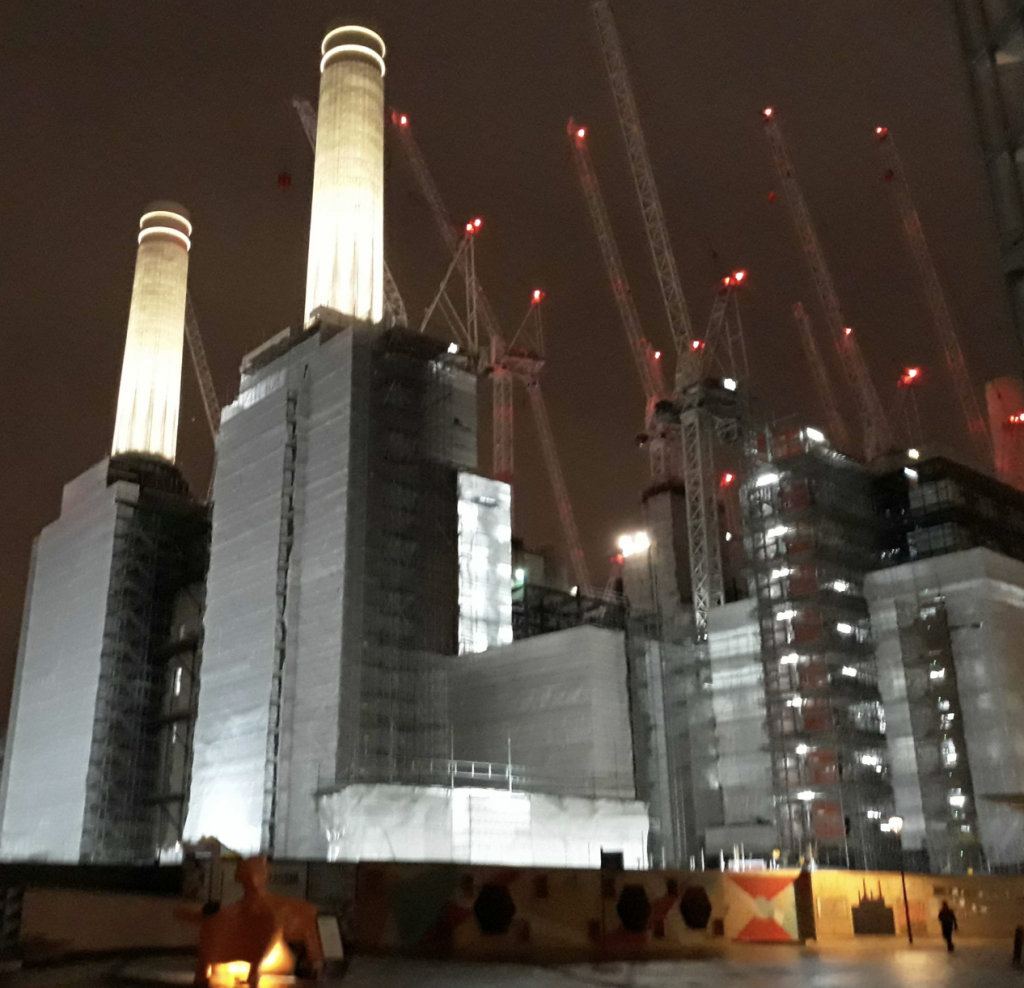
Last week I travelled up to London to take part in my first action with XR’s offspring, Just Stop Oil. There’s much to say about how the nature and tone of this new campaign has changed since 2019. As has XR’s, perhaps. What’s on my mind here, though, is how it felt to revisit the now fully revamped power station – or rather, shopping mall – the day before our JSO team walked out into a busy Aldgate junction and sat down.
Stepping inside the illuminated interior of this newly completed playground for the rich (‘every inch monetised’ as one reviewer put it) wasn’t so different to looking at it from across the river three years ago. Here in this newly unwrapped shopping mall, then, I met more or less what I’d come expecting to meet: a palpable sense of the overwhelming momentum which these civil resistance campaigns have been attempting to set their shoulder against – the brightly lit state of entrancement at the heart of our oil-fuelled consumer economy. But the reason I’m bothering to talk about this here isn’t simply to go over all that. It’s a conversation I had with my friend Geoff the following day, my limbs still heavy with that spectacle of cheerful omnicide, a few hours before heading off to meet up with the JSO team.
Geoff’s an artist and builder, and someone for whom honesty’s an involuntary virtue. When we first met around twelve years ago I’d recently become drawn to Japanese Pureland Buddhism, in large part through the unforgettable book on this tradition by the novelist Hiroyuki Itsuki: Tariki: embracing despair, discovering peace. Itsuki’s spiritual memoir spoke deeply to me at the time, as it does now. It also connected with Geoff in a way I doubt any other ‘dharma book’ would have. The melancholic authority of Itsuki’s account of his lifelong survivor’s guilt, and of how he found in the Pureland dharma of Other Power a recourse that stayed his hand more than once from taking his own life – all this feels as alive and real to me now as it did then. As I sat with Geoff in a cramped Conway Hall coffee shop I talked with him about that sense of overwhelm, stood before the old power station three years ago and last night – and about the shrillness or silliness, as it seemed to me, of any of us imagining we might somehow turn this juggernaut around ‘in the next two or three years’.
Geoff listened, intent as always. Then he asked if I might not have all this the wrong way around. Suppose it was more the case, he said, that whatever turn this is, it’s something already here – embodied not least by each of these little London roadblocks: an inexorable process of slippage with its own unpredictable tipping points, as our lethal dominant culture transitions or collapses, for better or worse, into whatever comes after it. We might choose to try and influence that transition or not, as we wish, but whatever it may or may not evolve into later is not only radically unknowable from where we stand, but curiously irrelevant.
At the heart of Itsuki’s memoir is a memory. As a 13-year-old boy he nearly lost his life when he attempted to swim the Taedong river, in full spate after heavy rains. As he reached the middle of the river Itsuki realised he wasn’t going to make it, his limbs weakening in the cold as the river’s ferocious undertow began to overpower him. By the time he somehow made it back to the bank and crawled out, this experience of the inexorable drag of the Taedong current had filled the young Itsuki with a deep sensation of his own powerlessness – a physical sensation rather than an idea, one that never left him. It’s this heavy-limbed understanding of his incapacity as an isolated individual, Itsuki tells us, that forms the beating heart of his lifelong understanding of Other Power: ‘A single drop of water in a mighty river. A person is a single drop of water in a mighty river.’
For more than ten years now this sense of being born on an invisible current is how I’ve most viscerally related to a sense of Other Power. Sometimes I’ve spoken of this current as Mother – Our Mother at the Bottom of Time, as my rosary-praying friends like to say – sometimes as Amida, Oya Sama – sometimes simply as Spirit. Whatever. I’m not very good with names – an incorrigible fidget – but insofar as Other Power feels palpable to me, it’s in these gravitational terms. Like Itsuki says, an involuntary bodily sensation rather than an idea – neither a reward for anything, nor something achieved through effort or ‘spiritual attainment’. Just, how things are when we stop trying to manipulate reality to suit our preferences.
As the familiar long wait to be processed after the JSO roadblock played itself out I spoke to my arresting officer about the chances of survival if one were to fall into the Thames at night. Not good, apparently. One of the things I learnt from this man is that the Thames has up to eleven different currents moving within it at any one time, which along with the deep cold are part of what makes it so dangerous. I don’t know where any of this goes next, and seem to have lost track of what I’d even mean by hope or despair, but I think Geoff’s right about these campaigns. Our individual actions and these transient alliances they sometimes coalesce into are of course integral to whatever transition we’re living through. A single drop of water in a mighty river. But more simply than that, what our involvement in these campaigns offers us is a way to live our lives right now as if causing harm to others – or rather, seeking not to – matters. To align our daily lives with the steadying current of nonviolence, ahimsa, caught up as we are in a collective act of intergenerational harm whose scale renders it literally unthinkable within the entranced bubble that is business as usual.
None of this feels resolved, but in here somewhere is why I feel the core of my own response to biospheric collapse, now, is to find and connect with friends with whom to lean back into Other Power with whatever years I have left. To keep turning towards living the dharma in company, as we align together with whatever un-nameable current these friendships form part of, whether or not we find ourselves presently locked or glued on to anything.
Namo Amida Bu
Mat Osmond
Follow
Mat Osmond is a writer and illustrator based in Falmouth, Cornwall. Find more of his writing at Dark Mountain and Borrowed Time

